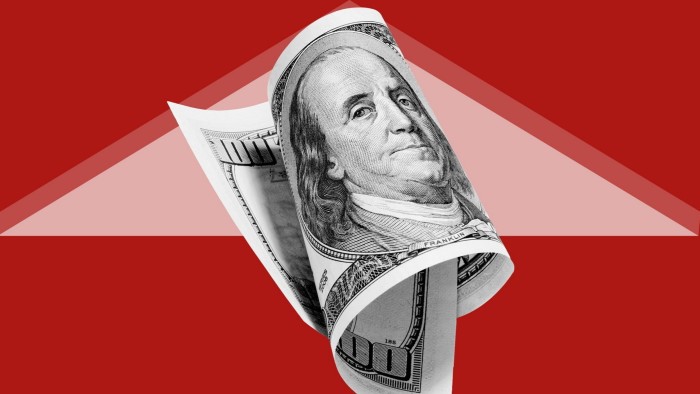Unlock the White House Watch newsletter for free
Your guide to what the 2024 US election means for Washington and the world
The US dollar edged higher and European equities fell on Tuesday as investors were unsettled by president-elect Donald Trump’s pledge to levy additional tariffs on imports from Canada, Mexico and China.
The dollar index, which tracks a basket of currencies including sterling and the yen, was up 0.1 per cent in London, having earlier risen higher in Asia trading.
Currencies in tariff-targeted nations fell. The Mexican peso suffered the steepest drop, falling 1.1 per cent against the greenback, while the Canadian dollar was down 0.9 per cent.
In Europe, where both the threat of direct tariffs and the potential fallout from tariffs on China have worried investors, the region-wide Stoxx Europe 600 index was down 0.6 per cent.
The moves mark a partial reversal of Monday’s trading, when investors welcomed the nomination of hedge fund manager Scott Bessent as Treasury secretary — seen by investors as a sign that Trump’s policies may be moderated. That sent the dollar, which had rallied strongly in recent months, lower.
“The markets are in a total yo-yo for the time being,” said Emmanuel Cau, an analyst at Barclays. “It saw the choice of Bessent as a more pragmatic move yesterday, but today is a total tweak of that, [with the perception that] Trump will have a hard tariff approach.”
In a post on his social media site Truth Social late on Monday, Trump announced plans for an additional 10 per cent tariff on goods from China as well as a 25 per cent levy on “all products” from Mexico and Canada.
US Treasuries, which rallied strongly on Monday, lost some of their gains on Tuesday, pushing the 10-year yield up 0.04 percentage points to 4.3 per cent. They have suffered in recent weeks on fears that tariffs would drive up inflation and put upward pressure on interest rates.
The market is waking up to the negative factors from Trump’s policy agenda, said Laura Cooper, head of macro credit at Nuveen. “It’s not just the sugar high of fiscal stimulus,” she said.
While Trump only singled out China, Canada and Mexico, European companies that investors fear may be hit by the fallout were down. Daimler Truck was one of the biggest fallers in the Stoxx 600, dropping 3.7 per cent. Shares in Stellantis and Volvo were also down.
In Japan, the export-heavy Topix closed down 1 per cent, while Taiwan’s Taiex finished the day 1.2 per cent weaker.
Chinese stocks, however, shrugged off the news, while the renminbi fell 0.2 per cent against the dollar, with the proposed tariffs on Chinese imports lower than some investors had feared.
Brian Arcese, a portfolio manager at Foord Asset Management in Singapore, said there was an element of “relief” in Chinese markets over the announcement. “[It] is largely a function of the tariff proposal being 10 per cent and not 60 per cent . . . though we wouldn’t be surprised to see these numbers change over time,” he said.
Economists at Standard Chartered estimated that a 1 percentage point increase in US tariffs on China resulted in a 1.5 percentage point decline in Chinese exports to the US during Trump’s first term as president.
On Monday, “the market narrative was that the nomination of Scott Bessent [was of] someone who understood the market and could reduce the more extreme policy scenarios”, said Jason Lui, head of Asia-Pacific equity and derivative strategy at BNP Paribas.
“But by including Canada and Mexico on day one, it may open the door to faster tariffs on other trading partners,” he added.
Additional reporting by Rafe Uddin in London


